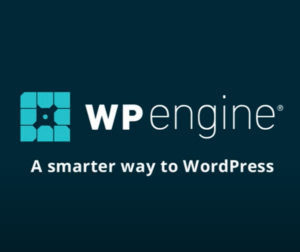Your cart is currently empty!
Blocks came out in late 2018 initially for blog posts and page contents. The Block Editor project, originally named Gutenberg, has gradually expanded since. Starting January this year WordPress core introduced Block Themes (AKA Full Site Editing) where Blocks are used for templates, headers, footers, sidebars and more. That made 2022 a game changer because you no longer need a third party page builder to edit site templates without code. Default themes were Twenty-Twenty One Blocks experiment, Twenty Twenty-Two, and now Twenty Twenty-Three.
WordPress editing is becoming more performant, accessible, standardized and interoperable among themes and plugins. Plus for WooCommerce sites the core system has been rapidly developing and releasing Blocks and Templates in support of the new standards.
Modern Block standards are inspired by non WordPress systems as well as WordPress specific Page Builders. The biggest problem with third party Page Builders has been lacking standards recently termed subtractive competition by Darrin Ethier at WordCamp Europe 2022. Divi was an original success story but it fell behind Elementor since Elementor offers a GPL compliant free version. WP Bakery has been popular because its leaner and its licensing allowed it to be bundled into themes, but is regarded as ugly and difficult to use. There have been several other builders claiming to be the best WordPress building experience, but without massive popularity these projects are unlikely to stand the test of time.
A Block Theme can be as simple as a few basic files that tell WordPress to engage Block building; specifically style.css headers, theme.json setup details, and templates/index.html containing the post contents block. The default themes mentioned above contain a bit more but remain largely blank canvases.
For those wishing to skip the blank canvas they could install one of the ~200 prebuilt Block Themes from the open-source Theme Repository. Existing templates comprised of Blocks can be transferred between Block Themes by a developer as there’s no automated transfer process as yet. Regardless of theme and templates, Block Patterns bring over canned page sections into Blocks.
There remains some commonly used features missing in the core Blocks. Here’s block add-on projects I suggest having a look at:
Open-source single block plugins
- Layout Grid Block
- 100k installations
- 29KB
- Easy Accordion
- 40k installations
- 928KB
- Freemium
- Accordion Blocks
- 20k installations
- 181KB
- Blocks Animation
- 20k installations
- 108KB
- Map Block for Google Maps
- 20k installations
- 146KB
- GutenSlider
- 10k installations
- 4.9MB
- SimpleTOC
- 10k installations
- 345KB
- WP Map Block
- 10k installations
- 139KB
- Lightbox for Gallery & Image Block
- 9k installations
- 9KB
- Block Visibility
- 7k installations
- 165KB
- Freemium
- Lightweight Accordion
- 6k installations
- 9KB
- Accordion Toggle by WPDeveloper
- 3k installations
- 2.3MB
- Advanced Accordion Gutenberg Block
- 1k installations
- 851KB
- Conditional Blocks
- 1k installations
- 271KB
- Toggle Content by WPDeveloper
- 500 installations
- 247KB
Open-source block kit plugins
- JetPack Blocks by Automatic
- CoBlocks by GoDaddy
- 500k installations
- 54 blocks
- 1.8MB
- Spectra by Brainstorm Force
- 400k installations
- 33 blocks
- 2.9MB
- Kadence Blocks
- 300k installations
- 21 blocks
- 2.2MB
- Otter Blocks by ThemeIsle
- 200k installations
- 11 blocks
- 4.6MB
- Freemium
- Genesis Blocks by StudioPress
- 70k installations
- 22 blocks
- 673KB
- Freemium
- Stackable by Gambit Tech
- 70k installations
- 39 blocks
- 2.1MB
- GetWid Blocks by MotoPress
- 50k installations
- 41 blocks
- 2.1MB
- Ultimate Blocks
- 40k installations
- 47 blocks
- 3.9MB
- Gutenberg Blocks by PublishPress
- 30k installations
- 27 blocks
- 2.7MB
- Freemium
- Essential Blocks for Gutenberg by WPDeveloper
- 20k installations
- 40 blocks
- 3.1MB
- Qubely by Themeum
- 10k installations
- 28 blocks
- 2.1MB
- Freemium
- Editor Plus
- 8k installations
- 6 blocks
- 1.4MB
Open-source block management plugins
- Genesis Custom Blocks (create custom blocks)
- 10k installations
- 367KB
- Freemium
- Create Block Theme (use Google or custom fonts, import/export theme files)
- 2k installations
- 680KB
I suggest approaching these add-ons as follows:
- Use sparingly! Use core blocks as much as possible. Beware anybody editing the site could use add-on blocks unknowingly.
- Decide whether to use one or more single-service plugins or a single kit plugin, never multiple kits on a given site.
- Begin with installing the smaller and simpler option and work into a bigger option only when necessary.
- Never use layouts from an add-on. Only use specific blocks that aren’t otherwise available in core. You can do all kinds of layouts in core, especially if you have a Block Theme that supports the full use of Columns, Group, Stack, and Row containers at full, wide, standard, or custom widths. Remember you can nest these containers and set backgrounds and padding within each.
That wraps-up my latest news on Blocks. If you have a funded WooCommerce project that needs help with Blocks, contact me.







